Patna, historically known as Pataliputra, is the capital of Bihar. Founded in 490 BCE by the king of Magadha, Patna(then known as Pataliputra) is one of the oldest continuously inhabited places in the world. Pataliputra, was the capital of the Magadha Empire and the seat of learning and fine arts. It was home to many astronomers and and scholars including Aryabhata, and Chanakya. The modern city of Patna is mainly on the southern bank of the river Ganges.
We drove to Patna from Rajgir. The traffic and the roads were quite horrendous. We had a list of sites that we were planning to visit but spent most of the day stuck in traffic. We were lucky to see a couple of attractions.
- Ruins of Pataliputra Kumhrar
- Takth Sri Patna Sahib
Ruins of Pataliputra at Kumhrar Park – About 10 km from the center of Patna are the ruins of its predecessor – Pataliputra. The city that was ruled by 3 legendary kings – Ajatshatru, Chandragupta, and Ashoka – is today just a pile of rubble. The ruins were once the center of power, trade, arts, and learning in ancient India. Excavated at different points in time by the Archaeological Survey of India, the ruins require you to use your imagination to see what a grand city it once was. The first excavation revealed traces of 72 stone pillars and the second excavation revealed 8 more pillars and an additional four pillars of an entrance porch. Excavation of these 80 pillars gave this place the name “Eighty Pillared Hall”.
We walked around this beautiful park to see what was left of the ruins which was not much. Fragments of the pillars from the Eighty Pillared Hall are on display.
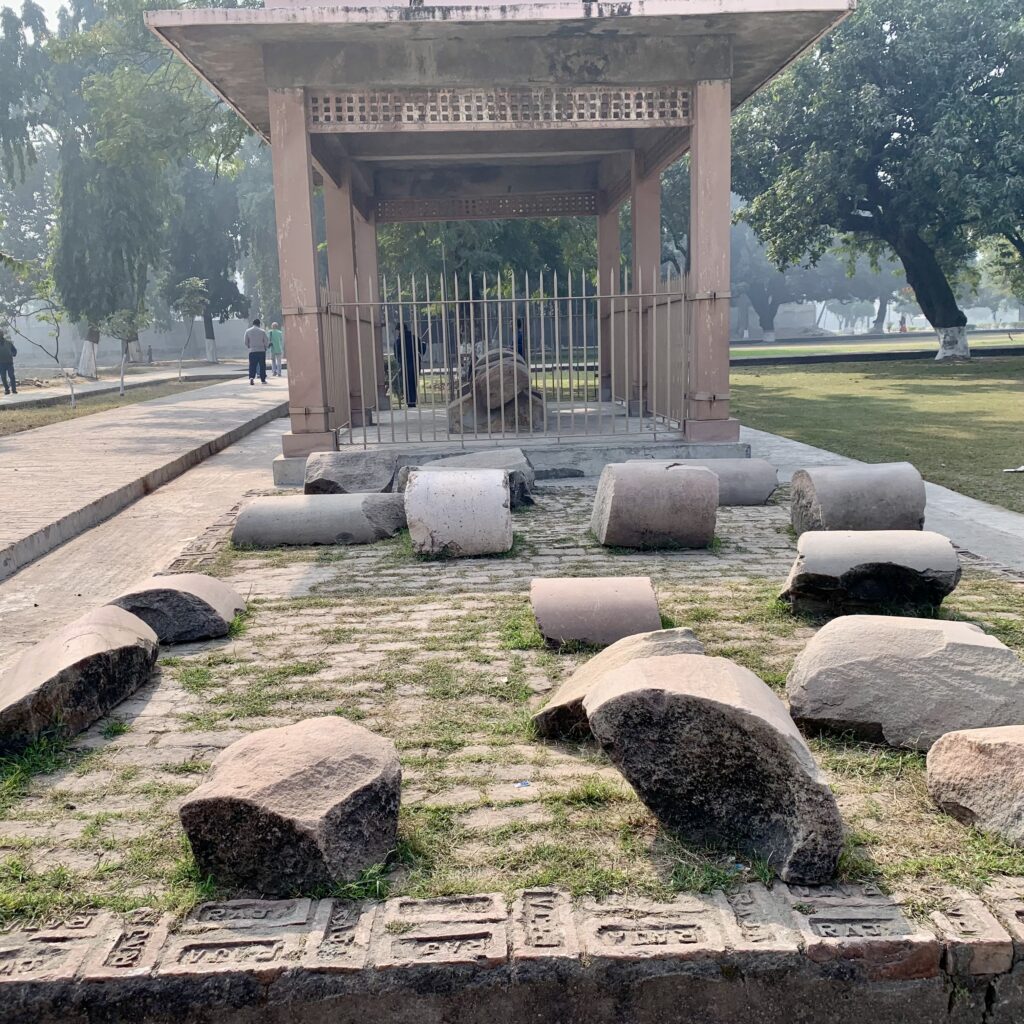
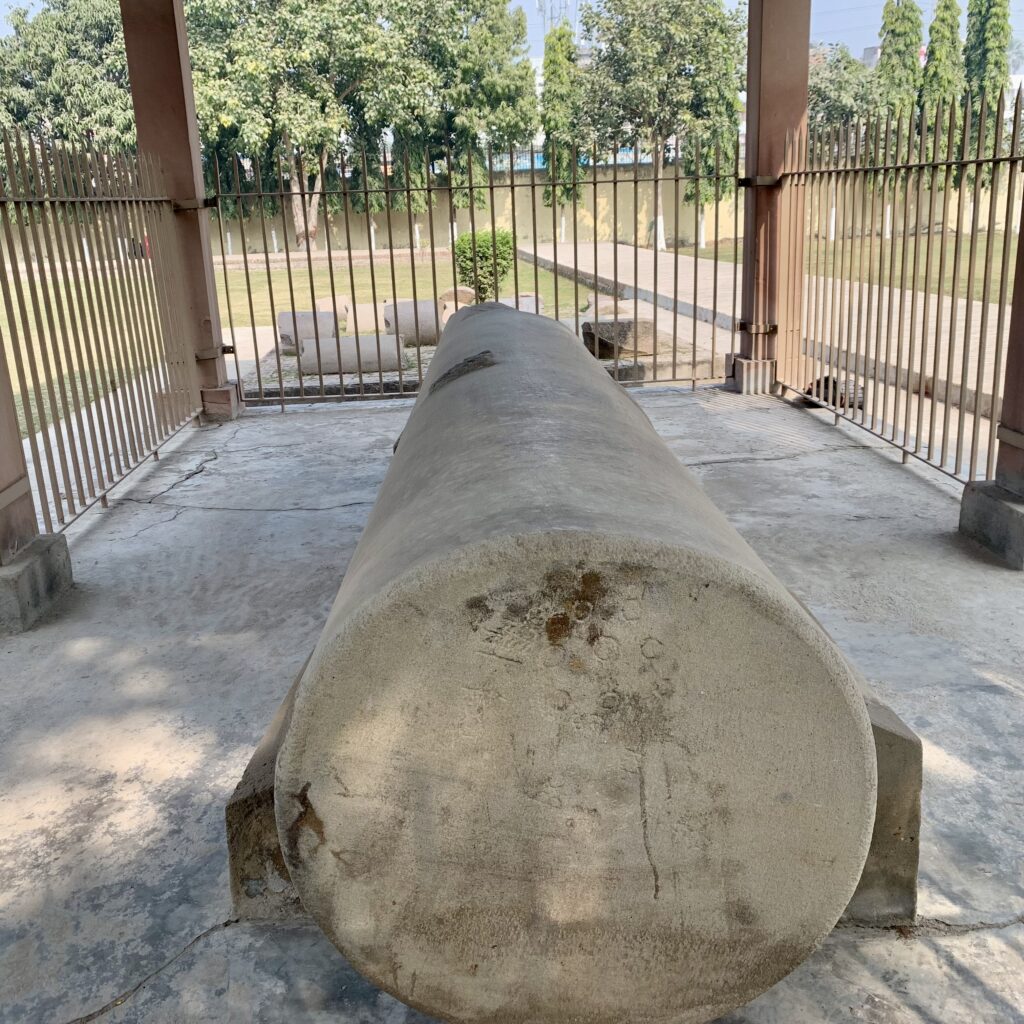
Excavations conducted at Kumhrar in 1951-55 unearthed another brick structure of 4th-5th century A.D. This was a hospital-cum-monastery run by the noted physician Dhanvantari during the Gupta period.
This was identified as Arogya Vihar or hospital-cum-monastery based on an inscription on a terracotta seal discovered here. The structure was erected on a well-laid foundation. The width of the rooms was 10 feet but its length varied from 10 and a half to 21 and a half feet.
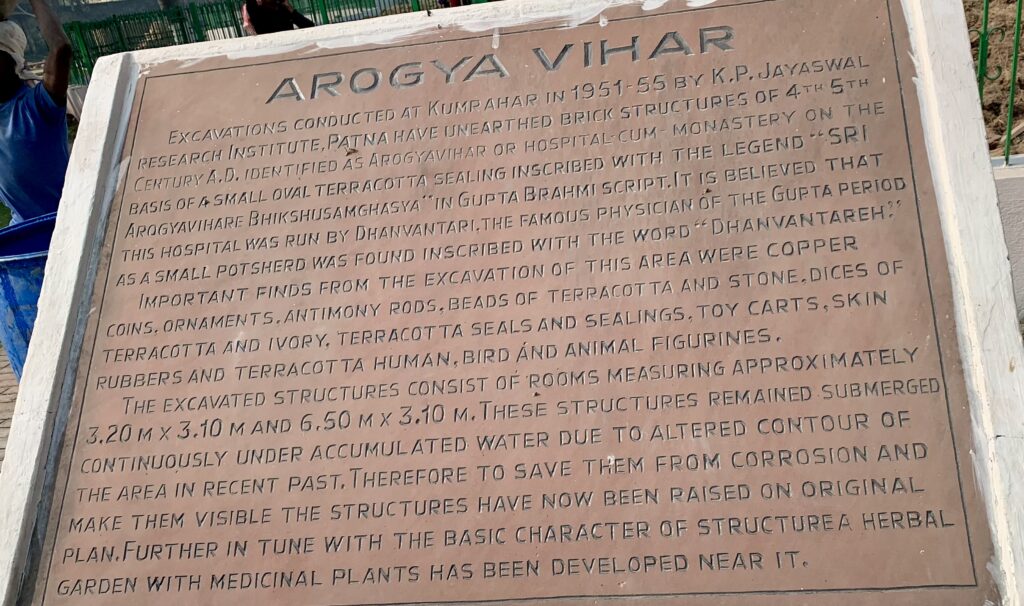
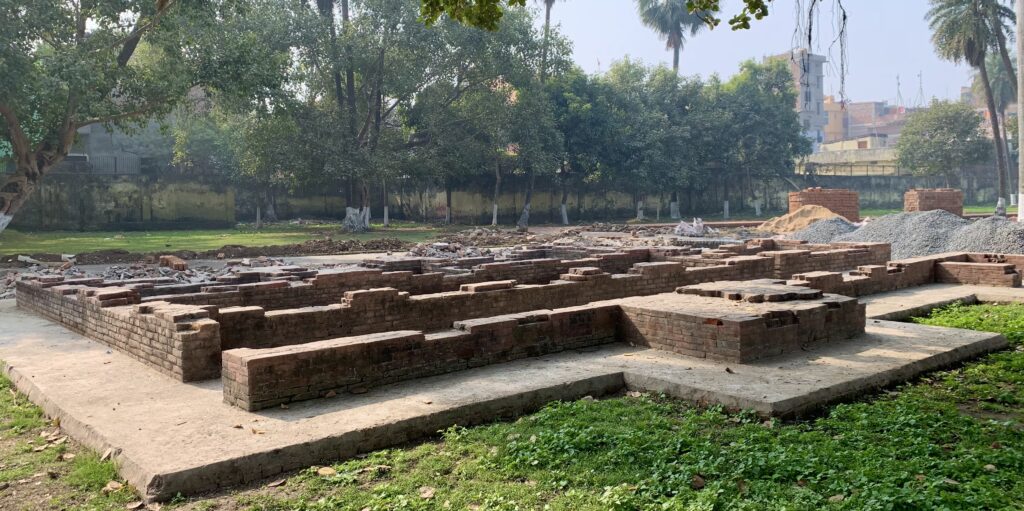
You need to buy a ticket to enter this place which is open from 8am – 8pm. The ticket counter is located next to the main entrance.
Takth Sri Patna Sahib – Patna is revered by the followers of the Sikh religion as this is the place where the 10th Sikh Guru, Guru Gobind Singhji was born. Takht Sri Patna Sahib was built by Maharaja Ranjit Singh to commemorate the event. Also known as Harmandir Sahib, the holy shrine is built in the old quarters of Patna city in an area known as Kucha Farrukh Khan and is thronged with devotees from all over the globe.
The road leading to this place is narrow, crowded, and not well maintained. Once you enter the Gurudwara, you are in another world, a world of calm and beauty. The gurudwara is very clean and well maintained.
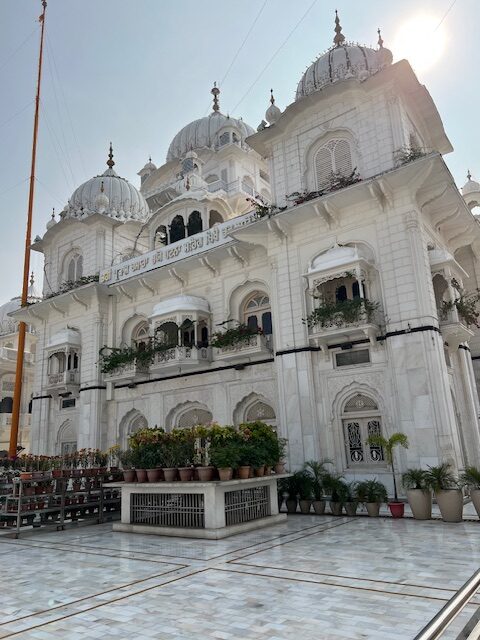
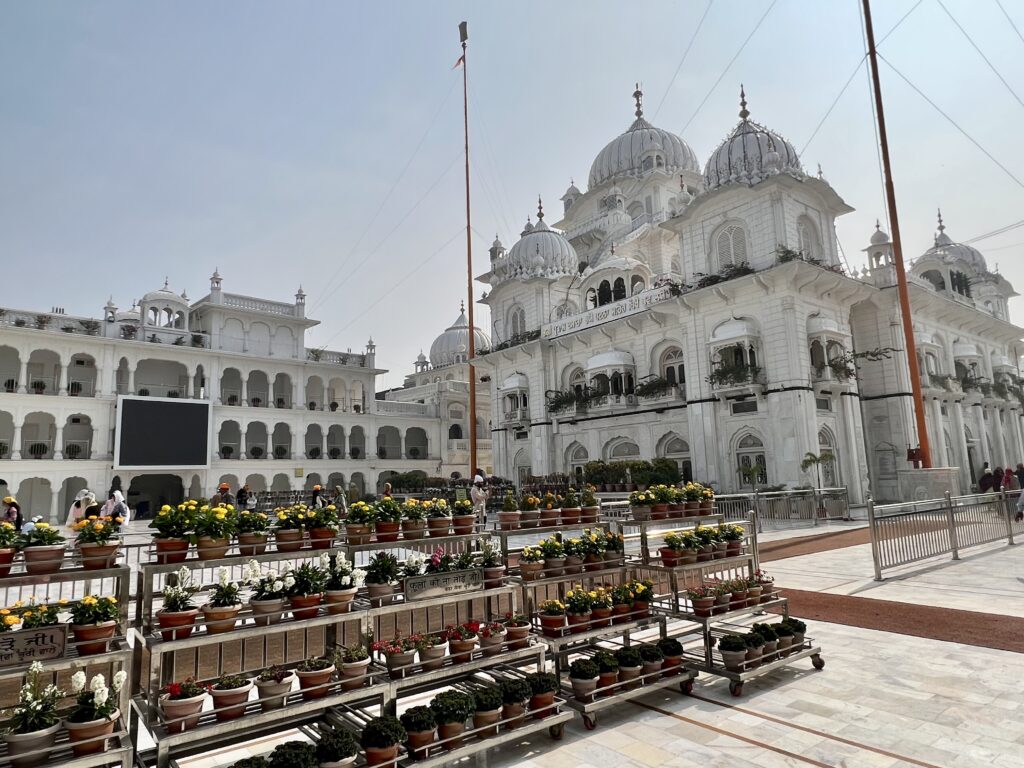
Note : You will have to remove your shoes and cover your head to enter the temple.
Here are some other places in Patna that are worth visiting and free to visit:
Choti Dargah – Just 32 km west of Patna lies one of the finest and least known Mughal structures in India – the Choti Dargah of Maner. A magnificent three-storied structure, the mausoleum was erected in 1616 in honor of the Sufi saint Makhdoom Shah Daulat who passed away in Maner and was buried here. Its beautiful dome flanked by four twelve-sided minarets, age-old walls adorned with exquisite motifs and ceilings inscribed with passages from the Quran make for memorable viewing.
Golghar – This arresting beehive-shaped structure is the city’s most iconic landmark. A unique, whitewashed dome with a spiraled staircase, Golghar was built by Captain John Garstin in 1786 as a granary for the British army garrisoned in the city. The most amazing thing to note about this structure is that the huge dome, 29 m in height and 125 m in diameter, is not supported by any pillars!
Golghar was meant to be the first in a series of similar structures intended to act as a preventive measure against frequent famines in the area. None of the other ‘golghars’ were ultimately built, giving us a one-of-a-kind building that you must-visit in Patna.
Mahavir Mandir – One of the largest temples dedicated to Lord Hanuman, Patna’s Mahavir Temple is a tranquil oasis in a crowded urban jungle. Most likely built in the 17th century, the temple started gaining popularity after India’s partition in 1947 when a large number of Hindu refugees from the newly-created Pakistan started settling down in the city. Besides the beautiful idol of Lord Hanuman, the temple is also home to a ‘floating stone’ from the legendary Ram Setu.